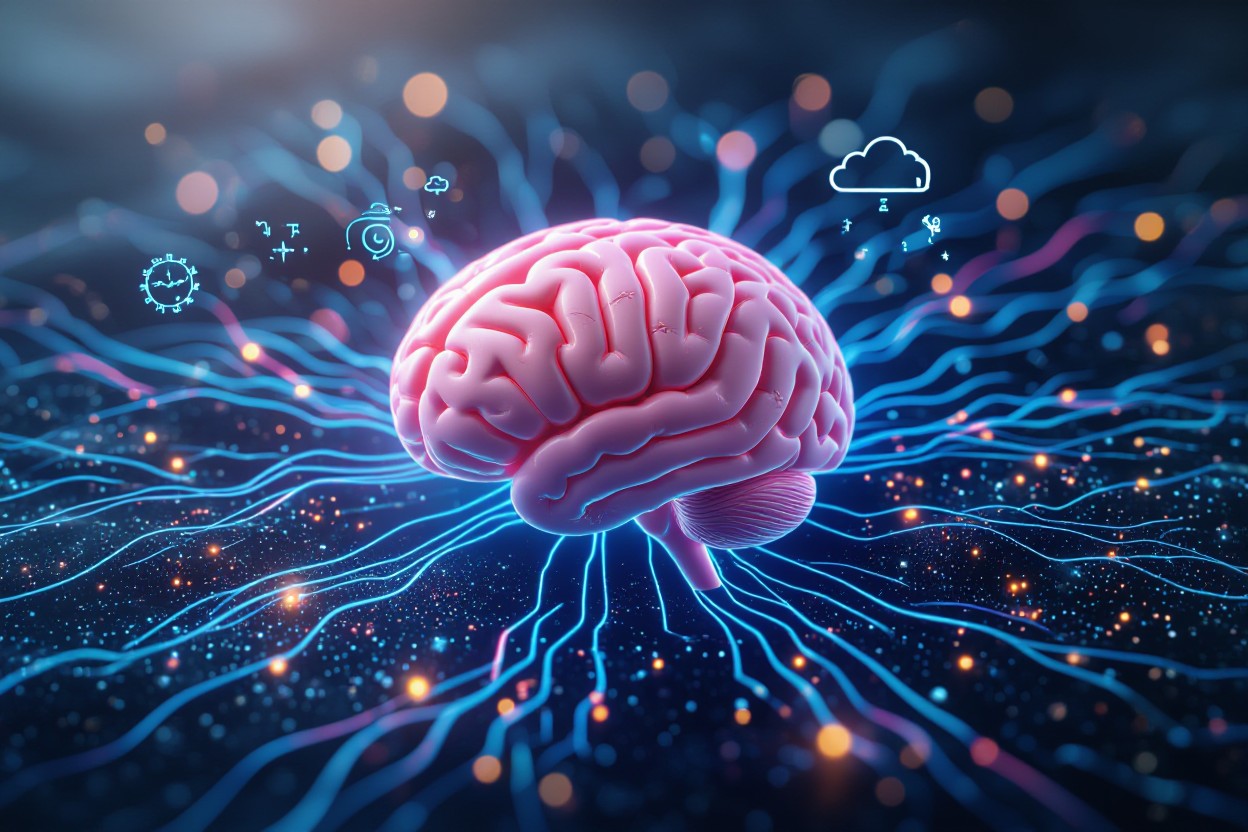There’s an enduring enigma about why your mind conjures vivid, often strange images while you sleep. I invite you to journey with me as we research into the profound implications dreams hold for understanding your subconscious. By exploring scientific theories and neurological insights, we uncover how dreams might be your brain’s way of processing emotions, solving problems, or even protecting you from threats. Together, we’ll navigate this fascinating frontier where science meets the intangible, shining light on one of humanity’s most mysterious experiences.

The Neuroscience of Dreaming
The brain enters a remarkable state during dreaming, primarily during REM sleep, where neural circuits engage in intricate patterns of activity. I see this phase as the brain’s playground, where memory, emotion, and imagination converge. Scientists use EEG and fMRI to observe fluctuating activity in the limbic system and visual cortex, alongside decreased prefrontal cortex activity, explaining dream vividness and bizarre logic. These neural fireworks illustrate how your subconscious mind weaves experiences and emotions into the tapestry of dreams, underlying a complex neurobiological process yet to be fully decoded.
Brain Activity During REM Sleep
REM sleep triggers bursts of rapid eye movement, accompanied by heightened activation in your visual and emotional centers, like the occipital lobe and amygdala. Conversely, areas responsible for executive function and rational thought, such as the dorsolateral prefrontal cortex, show diminished activity. This imbalance creates the intense imagery and surreal scenarios typical of dreams. Notably, the brain’s cholinergic system spikes during REM, enhancing neural plasticity and integrating new memories, suggesting a biological drive behind the vivid hallucinatory experiences that fill your dreams.
The Role of Neurotransmitters in Dream Formation
Dream states are orchestrated by fluctuating levels of neurotransmitters like acetylcholine, serotonin, and norepinephrine. High acetylcholine activity in REM sleep fuels cortical arousal and dream vividness, while suppressed serotonin and norepinephrine reduce inhibitory control, allowing your subconscious to roam freely. These chemical shifts modulate synaptic connections and brainwave patterns, effectively lubricating the neural machinery responsible for dream construction, emotional processing, and memory consolidation within the sleeping brain.
Delving deeper, acetylcholine’s surge during REM sleep invigorates the cortical circuits important for sensory integration, making dream imagery strikingly lifelike. Meanwhile, the drop in norepinephrine curtails stress-related brain responses, potentially explaining why dreams often bypass logical constraints and emotional filters. Serotonin’s decreased presence further loosens cognitive controls, letting bizarre or emotionally charged narratives unfold unchecked. Together, these neurotransmitter dynamics sculpt a mental environment where your brain experiments with emotions, rehearse problem-solving, and perhaps adapts to waking challenges by replaying and integrating experiences at a synaptic level.

Dreams as Reflections of Reality
Dreams often act as distorted mirrors of our waking lives, blending concrete events with abstract emotions. Your mind sifts through fragments of reality—images, sounds, and conversations—then creatively reassembles them during REM sleep. This synthesis means that while your dreams are not straightforward recordings, they reveal underlying thoughts and feelings about your daily existence, sometimes exaggerated or twisted to expose subconscious patterns that elude conscious awareness.
The Influence of Daily Experiences on Dream Content
Daily stimuli, especially emotionally charged moments, heavily sculpt dream narratives. For example, if you experienced anxiety at work, your dreams might dramatize conflict or failure scenarios. Research using dream diaries consistently shows that about 80% of dream content correlates to recent or personally significant events, illustrating how your brain processes unresolved issues or assimilates new information while you sleep.
Psychological Theories: Freud to Contemporary Perspectives
Freud’s idea that dreams represent disguised fulfillments of repressed desires laid groundwork, but modern theories emphasize more complex cognitive functions. Today, many psychologists view dreams as problem-solving mechanisms or simulations that help you rehearse potential real-life situations. This evolution marks a shift from symbolic interpretation to seeing dreams as integrated functions of memory consolidation and emotional regulation.
Diving deeper, Freud’s psychoanalytic approach suggested that the latent content of dreams uncovers hidden fears or desires, often sexual or aggressive, obscured through symbolism like the classic “falling” or “flying” motifs. Jung expanded this to include archetypes and collective unconscious elements, proposing that dreams connect personal experience to universal themes. Contemporary neuroscience correlates these theories with activation-synthesis models, where random neural firing during REM is woven into coherent narratives by your cortex. Experimental studies using fMRI scans reveal specific brain areas—like the amygdala—become highly active during emotionally charged dreams, supporting the idea that dreams integrate emotional memories, thereby aiding your psychological balance and adaptability.

Cultural Interpretations of Dreams
Throughout human history, dreams have served as windows into the unseen, often regarded not just as random brain activity but as intimate messages from the divine, the future, or the subconscious. Across cultures and epochs, these nocturnal narratives have been woven into rituals, decision-making, and personal identity, reflecting complex worldviews. Dream interpretation has ranged from prophetic insights in Ancient Egypt to psychological exploration in contemporary psychoanalysis, illustrating how the dreamworld acts as a mirror to both communal values and individual psyche.
Historical Contexts: From Ancient Civilizations to Modern Society
Ancient civilizations like Mesopotamia and Greece treated dreams as communications from gods or omens, often documented in meticulous dream manuals. For example, the Babylonians’ “Oneirocritica” catalogued dreams to predict outcomes, influencing rulers’ policies. Fast-forward to modernity, dream analysis evolved into a scientific inquiry pioneered by Freud and Jung, revealing subconscious patterns rather than supernatural messages. The transition reflects not just changing epistemologies but a deepening understanding of how dreams bridge memory, emotion, and creativity within our neurological framework.
Cross-Cultural Variations in Dream Symbolism and Meaning
Dream symbols can drastically differ: in many Indigenous Australian cultures, dreams are intertwined with the Dreamtime—a sacred epoch of creation—where waking and dreaming worlds merge, guiding ethical codes and land stewardship. Conversely, in Western societies, the focus often lies on individual psyche and emotional state. What might be a symbol of death in one culture could represent transformation in another, emphasizing how cultural lenses shape the perceived significance of dream imagery and its impact on waking life decisions.
Delving deeper, the San people of Southern Africa regard dreams as vital sources of healing and communal wisdom, with specific symbols like water and animals carrying distinct interpretive weight linked to survival and social identity. In contrast, many East Asian cultures, such as in Japan, attach significance to dreams as reflections of balance between yin and yang forces, often influencing day-to-day behavior. This spectrum of interpretations underscores the dynamic interplay between cognitive patterns and societal values, revealing that dreams function not only as internal experiences but as powerful cultural narratives shaping how you understand your place in the world.
The Therapeutic Potential of Dreams
Dreams often serve as more than mere cognitive byproducts; they can be potent vehicles for emotional healing and self-understanding. Their symbolic language, though sometimes cryptic, beckons you to explore unresolved conflicts and hidden fears. When accessed thoughtfully, dreams offer individualized insights that may catalyze psychological breakthroughs, transcending traditional therapeutic boundaries. Various methods now exist to harness this potential, transforming the nocturnal narratives into tangible tools for mental well-being.
Using Dream Analysis in Psychotherapy
In psychotherapy, dream analysis acts as a gateway to the subconscious mind, revealing layers of meaning beneath conscious awareness. Techniques grounded in Freudian and Jungian traditions dissect dream symbols to uncover suppressed memories, desires, or anxieties. Case studies show clients often experience enhanced emotional resilience by engaging with their dream content, sometimes unearthing pivotal moments contributing to their distress. Integrating these insights into therapy sessions provides a dynamic framework for confronting and resolving psychological dilemmas.
The Impact of Lucid Dreaming on Personal Growth
Lucid dreaming, the awareness that one is dreaming while still in the dream state, empowers you to consciously steer dreamscapes toward personal development. This phenomenon enhances problem-solving abilities, creative thinking, and emotional regulation by allowing experimental rehearsals of real-life scenarios in a risk-free environment. Studies report that regular lucid dreamers exhibit increased metacognition and reduced nightmares, which together foster greater psychological flexibility and self-efficacy.
Expanding on the influence of lucid dreaming, neuroscientific research highlights its capacity to activate prefrontal cortex regions rarely engaged during typical REM sleep. This activation correlates with heightened self-awareness and emotional control. Experimental groups practicing lucid dreaming techniques over several weeks demonstrated significant gains in identifying subconscious fears and testing behavioral responses, effectively rewiring neural pathways. Such neuroplasticity offers promising implications for therapeutic interventions in anxiety disorders and PTSD, underscoring lucid dreaming’s role not only as a fascinating cognitive state but also as a pragmatic tool for profound personal transformation.
The Future of Dream Exploration
Dream science is poised on an exciting frontier, where advances in both technology and theoretical models may soon turn speculative ideas into testable hypotheses. By integrating neuroimaging and machine learning, we’re beginning to decode the brain’s nocturnal narratives more precisely than ever. I anticipate this evolving understanding will not only enrich psychoanalytic frameworks but also inspire novel interventions for mental health. The future may hold the ability to modify or even “engineer” dreams, raising questions about autonomy and the very nature of consciousness as sleeping minds reveal deeper layers of subconscious processing.
Emerging Technologies and Sleep Research
Cutting-edge tools such as high-density EEG, functional MRI, and optogenetics have drastically expanded the range of dream research. For example, machine learning algorithms now reconstruct rudimentary visual imagery from brain activity during REM sleep, offering glimpses into dream content. Concurrently, wearable devices equipped with biosensors track sleep stages with unprecedented precision, facilitating personalized sleep therapies. These innovations suggest a near future where dream analysis becomes a standard clinical tool, enabling treatments tailored not just to symptoms but to underlying emotional and cognitive patterns revealed exclusively during dreaming.
Ethical Considerations in the Study of Dreams
The intimate nature of dreaming raises significant ethical questions about privacy and consent, particularly as technologies enable direct access to subconscious thoughts. You might not anticipate that decoding dreams could expose fears, desires, or memories you considered private. As dream data increasingly integrates with personal health records, safeguarding this information against misuse becomes critical. There’s also the risk that manipulating dreams, even for therapeutic ends, could alter identity or emotional states in unforeseen ways, demanding rigorous ethical frameworks before widespread application.
Exploring these ethical boundaries, I recognize that the power to peer into or influence your dreams touches on fundamental aspects of personhood and autonomy. Unlike waking thoughts, dreams often bypass conscious filters, revealing raw, unmediated mental content that individuals might not willingly share. This vulnerability necessitates informed consent protocols tailored to the unique context of dream research. Additionally, regulatory oversight must anticipate potential abuses, such as dream data being exploited by insurers or employers. This intersection of neuroscience and privacy law is an emerging battleground where protecting the sanctity of the subconscious mind will require ongoing vigilance.
Conclusion
Presently, I see dreaming as a profound interface between your conscious experiences and the cryptic workings of your subconscious mind. While science continues to unravel the mysteries of sleep, dreams offer a unique glimpse into our adaptive psyche and cognitive functions. You might find that exploring these nocturnal visions enriches your understanding of both your inner world and the universe’s intricate design. In contemplating why we dream, I encourage you to embrace the wonder and complexity inherent in this daily journey into the unknown.





Leave a comment